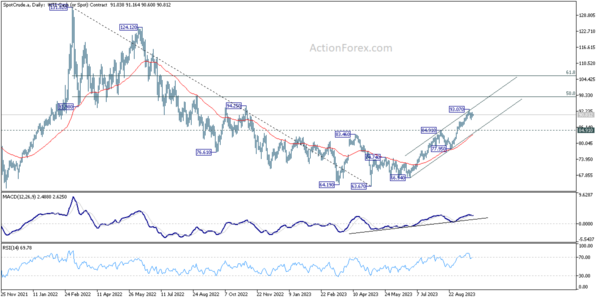The financial world was abuzz last week with discussions of oil potentially breaking the 100 mark. While some pundits deem this as a stretch, the consensus is that no one can entirely dismiss the possibility.
The recent spike in oil prices brings with it a myriad of concerns, particularly about its ripple effect on the broader economy. As central banks globally grapple to suppress rising inflation, the surge in energy costs, with gasoline taking the lead, is becoming a pressing issue. Notably, August’s inflation readings surpassed expectations in several countries, with energy prices being the main instigator.
Tracing back to late June, energy prices have witnessed a consistent rise. This surge can be attributed to crude output reductions by major oil producers in OPEC+, coupled with additional cuts from Saudi Arabia. These decisions have propelled crude futures by approximately 30% over the past quarter.
With the possibility of OPEC+ announcing another surprise cut, bullish momentum could very well drive oil prices beyond 100. Contrarily, some anticipate that if prices climb above 95 per barrel, there might be a significant dip in demand, causing oil price to recalibrate and settle within a more balanced range.
From a technical perspective, WTI crude seems to have hit a near-term ceiling at 93.07 last week. Given that D MACD has already slid beneath the signal line, the prevailing bullish momentum may have been exhausted for the near term.
Nevertheless, decisive drop below 84.91 resistance turned support is essential to counteract the uptrend that began at 66.94. If this doesn’t materialize, the prospects of a continued rally remain. Break of 93.07 will put key resistance level at 50% retracement of 131.82 to 63.67 at 97.74 into focus.












